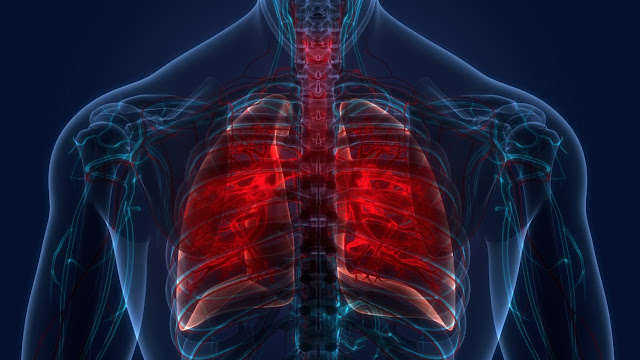We all know some basics about Tuberculosis, like
Tuberculosis (TB) is an infectious disease,which is caused by the bacterium Mycobacterium tuberculosis. It primarily affects the lungs but can also affect other parts of the body, such as the kidneys, spine, and brain.
TB is transmitted through the air when an infected person coughs, sneezes, or talks, releasing bacteria-containing droplets into the air that can be inhaled by others.
If you want to know the process
Now, I will show you how a doctor or health professional sees tuberculosis.
Let's take a case if anybody is showing symptoms of TB like coughing, fever,night sweat,blood in the cough, etc. And when the person goes to the doctor, he or she suspects it may be TB. To confirm, the doctor may have to do some diagnostic tests.
I am going to explain the procedures:
First, let's start with the Tuberculin Skin Test/Mauntex Test:
In this test, the healthcare professional injects a small dose of a substance called PPD (purified protein derivative) into the skin of your forearm. After 48 to 72 hours, a healthcare professional will check the injection site for a reaction, and if you see any induration or swelling, there is a possibility that that person has TB. If the person doesn't see any induration or swelling, or if the size of the induration is less than 1mm , then it's negative. As per the size of the induration, we can categorize it:
1: The size of the induration is more than 5 mm (+).
It is seen in people with
- Immunocompromised funtion
- HIV-positive patient
- Close contact with active TB patient
2:Size of the induration is more than 10mm(+)
It is seen in people with high exposure rate like
- People in PRISON
- Healthcare worker
- Homeless people
- Immigrants from high density area,where TB is common.
3: Size of the induration is more than 15 mm(+)
- Everyone remaining or the person with no known risk factors.
There are some important point to remember;
- It can show False positive result, if the person had taken BCG vaccine.
To solve this, we can check the INF-GAMMA level in the blood, which is released by our immune cells in response to TB antigens.
But there is a problem. From this test, we can't tell if the patient has latent TB or active TB.
To confirm whether it is latent or active, we have two methods.
1.X-Ray IMAGING
The doctor sees consolidation, nodules,cavities, infiltrates, etc. in the x-ray and determines the result.
If you want to know, how the X-ray works
2.Sputum/Biopsy
The healthcare professional collects three samples of sputum in an acid-fast Bacillus smear at 8-hour intervals and cultures the growth of TB bacteria. If Bacteria grows on the culture, it is active TB.
Now comes the next part. We have now diagnosed a TB patient. How can we treat it?
There can be two cases. As per the diagnostic result, the doctor may prescribe the medications.
- Latent TB
- Active TB
1. Latent TB
If the patient has a chest CT scan or an X-ray, the results are negative. INF-gamma assay is positive, and the Mauntex test is positive. The patient is not showing any significant symptoms. Then this is a case of latent TB. So the doctor may recommend:
- ISONIAZID(INH) for a 9-month course.
Isoniazid (INH) is one of the primary drugs used in the treatment of tuberculosis (TB). INH works by inhibiting the growth of the tuberculosis bacteria (Mycobacterium tuberculosis), effectively killing them or preventing their replication.
- RIFAMPIN for a 4-month course.
Rifampin works by inhibiting the activity of an enzyme necessary for the synthesis of bacterial RNA, effectively killing or slowing the growth of the tuberculosis bacteria (Mycobacterium tuberculosis).
2.Active TB
If the patient has a chest CT scan or an X-ray, the results are positive, like they have consolidation, cavity etc. INF-gamma assay is positive, and the Mauntex test is positive. The patient is showing significant symptoms like blood caugh, fever, night sweat. Then this is a case of Active TB. So the doctor may recommend:
- RIFAMPIN + ISONIAZID(INH) +PYRAZINAMIDE +ETHANBUTOL OR STREPTOMYCIN for 2 months course
The combination of rifampin, isoniazid, pyrazinamide, and ethambutol (or streptomycin) during the initial two-month phase is aimed at rapidly killing the TB bacteria and reducing the risk of drug resistance. Each medication targets the bacteria in different ways, making the combination more effective.
- RIFMPIN +ISONIAZID (INH) for 4 months
Now let's discuss some common side effects of these medications.
RIFAMPIN:
There can be red or orange-colored urine seen in patients taking this medication. It is generally not recommended for HIV-positive patients because it accelerates the metabolism of HIV medication and decreases its potential.
ISONIAZID(INH):
It causes vitamin B6 deficiency, so generally, doctors prescribe vitamin B6 supplements with the medication. It can also be toxic to the liver (hepatotoxicity).
PYRADIMMIDE:
It increases the uric acid level in the blood. Thus, it is contraindicated for gout patients.
ETHANBUTOL:
It can cause optic neuritis.
STREPTOMYCIN:
It can cause nephrotoxicity and odotoxicity.
Thus,finish our discussion about the diagnosis and treatment of tuberculosis. If you have any doubts or suggestions, please reach out to our contact page.
Thank you





.jpeg)
.jpeg)




.jpeg)
.jpeg)

0 Comments